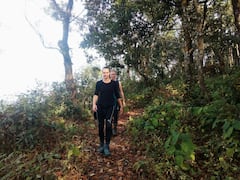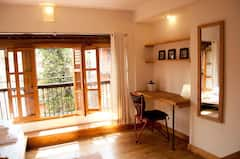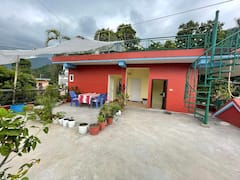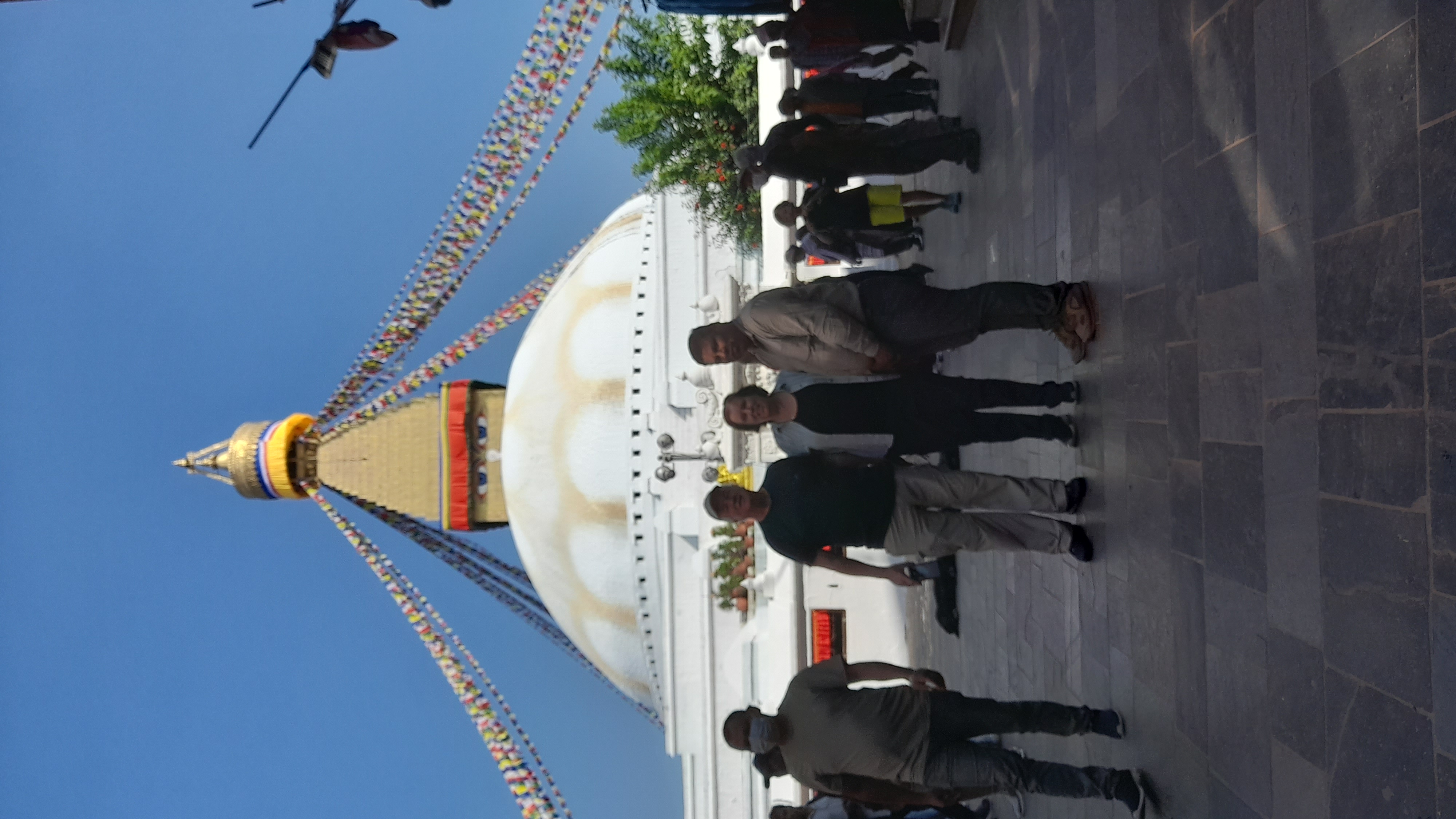Nepal is incredibly blessed because it so happens to have four different climactic regions, dictated by the diverse altitude or height above sea level of its different areas, ranging from 70 meters to 8,850 meters (230 to 29,035 feet) above sea level. Any naturalist who is extremely interested in having such a dense collection of flora and fauna in one area is sure to deem Nepal as a treasure trove. It is a sight to especially behold in spring, when the hills and mountainsides are full of new, colorful flowering species.
Even when you’re not joining a tour specifically to find flora and fauna, you will see a lot of domestic crops and animals by the roadside or on their way to the market. Nepal’s source of carbohydrates, a good part of the Himalayan diet, includes potatoes, barley, wheat, and corn. Its source of protein includes buffalos, cattle, and the mountain yaks. The country has also set up a lot of national parks and conservation areas to make it easier for outsiders to conveniently enjoy. The rarest wildlife is found in the higher altitudes but you might be able to catch a sight of the elusive Himalayan tahr, commonly known as a mountain goat. Barking deer and musk deer are also found in its forest areas.
A trip to Nepal is one of the best opportunities to commune with nature. There is a sense of urgency attached to getting a sight of it, especially since a lot of the species are facing severe threats of extinction. For new enthusiasts and naturalists, here are a couple of places in Nepal that you might like to check out especially famous for their flora and fauna:
1. The diverse altitude of the Everest Region

The Sagarmatha or Mt. Everest National Park is found in the Everest Region. It is considered the highest national park in the world. The entire park is perched above at an altitude of 3,000 meters (9,842 feet) but its highest peak is at around 8,000 meters (26,246 feet) including Mount Everest. The most interesting implication of the diverse altitude inside the park, is that it is also home to four different climatic zones in a single area. There are parts that are rich and fertile with forests and vegetation including rhododendrons, junipers, and firs; then there’s the Arctic zone, where plant life is impossible because of the constant presence of snow in the Himalayas. It also follows that the animals are quite diverse because of the different climates. Many adjust to the thin supply of oxygen because of the high altitude. Most of the physicalities such as thick fur (to keep heat) and short limbs (to prevent loss of body heat) are due to their physical environment.
You’ll most likely have a sighting of the Himalayan black bear, the musk deer, and the wild yak. If you’re lucky, you might see a Himalayan Wolf or a Red Panda, which only have a population of around 10,000 in the entire world. If you’re extremely lucky, you’ll be able to spot a snow leopard. These leopards are incredibly rare in the wild, and there are only 6,000 of them left. When it’s winter, some of these animals survive the harsh elements because they go into hibernation.
Sagarmatha National Park Tour
Address: Namche VDC 56000, Nepal
Website:
2. The sanctity and beauty of Muktinath

Muktinath, as a destination, packs a two-in-one punch. It happens to have some of the most beautiful sights in Nepal, and it is also one of the most sacred pilgrimage sights of Hinduism and Buddhism, one of the rare sights where both religions co-exist. Muktinath is both the village and the temple shrine found in the village. The Hindus call it Mukti Chhetri, which means the ‘place of salvation’ where Lord Vishnu manifested in Nepal. There’s also a spring near the temple, which symbolizes convergences of fire, earth, and water. To reach it is not an easy feat. Muktinath is found 3,800 meters (12,467 feet) above sea level and trekking it from Pokhara takes about 7 to 8 days. The shortcut would be to take a flight from Pokhara to Jomsom, and then trek another 7 or 8 hours via Kegbeni, or take a jeep. If you have the time though, Jomsom is best seen while on two feet. You can catch a dramatic landscape with barren, black mountains as foreground and golden sunrise or sunset as background. You’ll also find in this area the Kali Gandaki River, also known as the Black River because of the black stones and black soil found in its riverbed.
Muktinath Temple and Shrine
Address: Annapurna Conservation Area, Ranipauwa 33100, Nepal
Website: Muktinath Temple and Shrine
3. The accessibility of Langtang

Langtang is one of the most accessible national parks in Nepal, located just north of Kathmandu. It also covers two of the largest rivers in Nepal, the Trishuli and Koshi. The whole area is quite thickly forested and is home to a diverse set of flora and fauna, including in the more touristy spots of Langtang Valley, Gosainkunda Lake, and the village of Helambu. Parts of it is thickly covered in colorful plants like the rhododendron, rare conifers like the larch, and big trees like the alder and maple. Langtang National Park is home to leopards, red pandas, and the gray langur monkey. The whole area, like any other national park, is best seen on foot. You can also venture into the more inaccessible parts of the park, like the Langshisha Glacier or the Five Lakes.
Langtang National Park
Address: Helambu, 45007, Nepal
Website: Langtang National Park
You might be interested in these Airbnbs!
4. The colorful landscape of Shey Phoksundo

Found in Western Nepal, the Shey Phoksundo National Park is the largest and the only trans-Himalayan national park in Nepal. It is a beautiful, colorful, picture-worthy landscape that houses the Shey Monastery, Phoksundu Lake and Langu Gorge. Parts of it is grassy meadows and the other parts are dense tree ecosystems, which includes the willow, poplar, cypress, walnut, blue pine, juniper, and spruce. Of course, dense forestry like this will attract forest animals like wolves, weasels, mouse hares, leopards, ghorals, and musk deer. It also attracts the quite mountainous Himalayan thar, and the rare snow leopard and Himalayan black bear. To access this park, you’d need a group trekking permit.
Shey Phoksundo National Park
Address: 21400, Nepal
Website: Shey Phoksundo National Park
Nepal Tour Guide
Ananta Kafle
Hello there! My name is Ananta. I am a tourist guide. I have completed my master degree in Tourism Administration from Bangalore University since 2011 AD. I am a citizen of Nepal. I look after tours of UNESCO world heritage sites of Nepal. I can travel frequently to the tourist destinations of Nepal. One day trip to round trip tours are assisted by me to the travelers who would like to visit Kathmandu, Pokhara, Chitwan, Lumbini, Janakpur, Mustang district and many other places. Hindu temples and Buddhist stupas are main pilgrimage sites and medieval centuries kings courts are main historical sites in Nepal. Pokhara is famous for scenic beauty where we can find lakes including Fewa lake, Begnas lake etc. Chitwan has a national park where one horned rhinoceros, tigers and other wild life animals are found to see. Lumbini is the birth place of Gautam Buddha, he is the founder of Buddhism faith. Mount Everest is also a scenic attraction of Nepal. When you find these places on your interest to visit as tourist attraction, you may find me your the best travel provider. When there arises further assistance please free to contact me. Thank you.
Tours by Ananta
Nepal Tour Guide
Dinesh Thapa Magar
Meet Dinesh, your go-to guide for an unforgettable Nepal experience. With years of expertise, he seamlessly blends city charm with mountain thrill. Let Dinesh unveil Nepal's secrets, from vibrant streets to towering peaks, creating memories that linger far beyond the journey.
Nepal Tour Guide

Biren Choudhary
Nepal Tour Guide

Gyanendra Karki
Tours by Gyanendra
Nepal Tour Guide
Krishna Gautam
Namaskar (Hello)!Greetings from the land of discovery and adventure! I'm Krishna Gautam, a dedicated tour guide and travel planner for Nepal's breathtaking natural beauty and rich heritage of culture. I come with a Profound educational background and bring an original perspective to the journey. I received a master's degree in Rural Development and am currently pursuing an MPhil in Buddhist Studies and Yog Science at Tribhuvan University. In addition to my guiding experience, my university studies enable me to provide insightful commentary on Nepal's natural beauty and spiritual heart. With 29 years of expertise as a guide, I have been all throughout Nepal and have seen a variety of landscapes, from thrilling treks up to the basecamps of towering mountains to cultural journeys. I tailor every experience to fit your interests and schedule, whether it's taking in the colorful panorama of UNESCO World Heritage sites, going on challenging day treks, or taking all-inclusive round excursions to the most popular tourist attractions in Nepal, With so many attractions, Nepal has something to offer every kind of traveler. I promise that every second of your adventure will be full of excitement and discovery, from the busy streets of Kathmandu to the peaceful lakeside of Pokhara, from the greenery of Chitwan to the treasured birthplace of Lord Buddha in Lumbini.Some of the well-known locations I specialize in are cultural tours of Kathmandu's UNESCO World Heritage Site, as well as hidden gems that are just waiting to be discovered in Annapurna, Langtang, Manaslu, Upper Mustang, Dolpo, Ganesh Himal, Panchpokhari, Rolwaling, Solukhumbhu (the region surrounding Mount Everest), Makalu, and Kanchenjunga. My first priority are your comfort and happiness, and I take great pride in creating customized itineraries that meet your goals and interests. Whether you are looking for peaceful moments of reflection in the middle of nature, I can create a unique experience just for you.Allow me to serve as your guide as you set off on a wonderful adventure to discover the wonders and mysteries of Nepal's breathtaking landscape and deep cultural legacy. Let us together make some memories.I'm excited to plan your journey on this amazing journey just for you!Thank you!
The beauty of Mother Nature
Whether you are trekking through Sagarmatha, Muktinath, Langtang, or Shey Phoksundo, each of these Nepali sites offer something unique to the rest of the world. But if your body isn’t used to the high altitude, always be sure that you acclimatize by trekking slowly, and take multiple stops throughout the day, in order to prevent high altitude sickness. You need a sound mind and body to trek the natural wonders of Nepal, but if you push on, it rewards you with something truly enigmatic and rare; nature at its rawest.
History
Get Trip101 in your inbox
Unsubscribe in one click. See our Privacy Policy for more information on how we use your data

























Create an account to